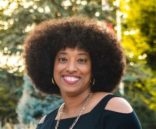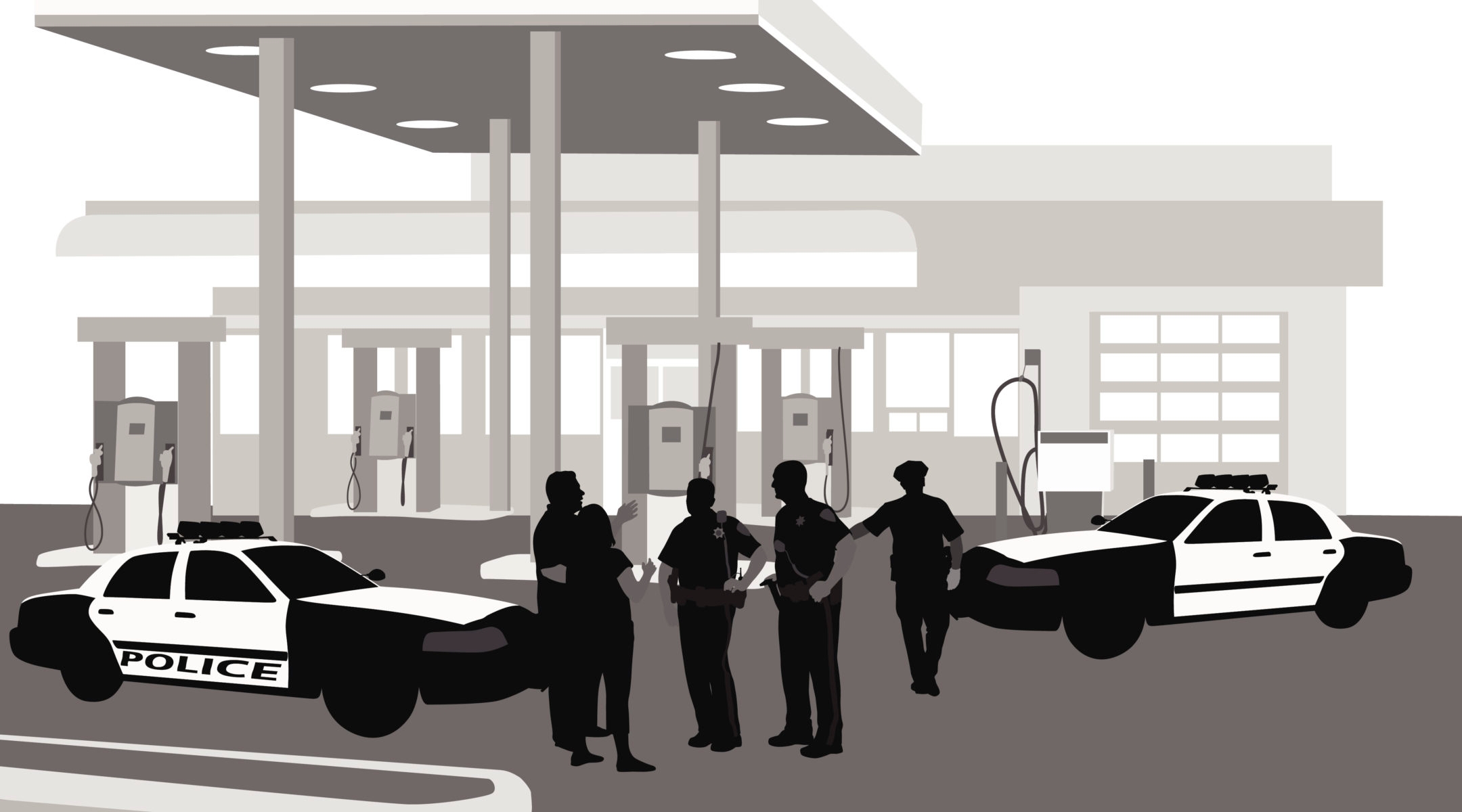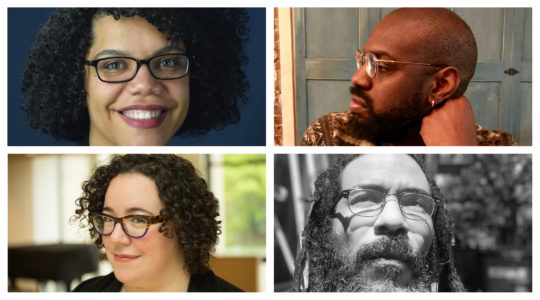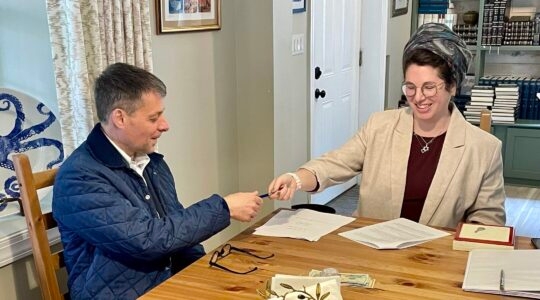BOSTON (JTA) — When we first moved here from St. Louis, my husband was a resident in medical school. He would rise early to take the T to work for long hours at a Boston city hospital while our four kids and I would start each morning by getting lost as we tried to navigate our way around the people and streets of suburbs that felt increasingly closed to strangers and overwhelmingly white.
In those days, as our small carload of Jews of Color made our way, we didn’t wince easily as people stared or, even worse, acted as if they couldn’t see us at all or be bothered to roll down their windows to answer our questions about directions. As born and bred Jews of Color, we were all used to what it felt like to be a minority among a majority of white people since we had been walking that walk for years — every day and every week that we had been enrolled in all-white Jewish day schools and subscribed to membership in an all-white suburban Jewish synagogues for the sake of sustaining our traditional Jewish observance.
In Missouri, we lived in one of the few suburban cities west of East St. Louis with racially integrated housing. But in our new neighborhood, in the heart of Newton, there were few people of color.
Outside of adjusting to the cool New England temperatures, we also had to adjust to the cool New England temperament, which was harder. It was difficult to tell, in the absence of a shared “hello” or the meeting of a neighbor’s gaze on the street, whether people were reserved and not welcoming to us because we had integrated the neighborhood or because they were just reserved and not welcoming as a rule.
Regardless, the reality of perceptions is lived most poignantly in the depths of one’s heart, so I have to admit that it was painful to have to wonder with each time we found ourselves lost and driving up to a new face, and a new location to get directions back home, how we would be received.
Fast forward to three months after our move, as I and a team of colleagues are preparing to host our national conference at a Boston hotel. We are filling welcome bags to give to some 300 student guests that will arrive shortly from around the country and realize that we have run out of the snacks that we are using to fill them. As the team lead, and one of two local staffers with a car, I elect to run to the nearest Costco to pick up a case of snacks. As I google the location and print out the directions, I manage to swallow my fear of getting lost, as I tell myself that the Costco is less than 20 miles from the hotel.
As I get into my minivan, I take a deep breath, scan the directions and say to myself, “You got this!” I decide to drive slowly and pay attention to all existing and missing street signs until I can get myself to the neighboring town of Watertown, where a precious case of granola bars resides. Ten minutes into the drive I’m feeling pretty good. I haven’t encountered any crazy “roundabouts” (where the road turns into a circle with multiple exits that have to be figured out instantly) and the directions, for the most part, seem to be pretty straightforward.
At one of the last left turns before reaching my destination, I notice a police car behind me, but I pay it no mind since I’m pretty sure that driving as slowly as I had been since leaving the hotel, I haven’t violated any speed limits. As I near the Costco, I see the gas gauge on my tank is a little low, so I decide to stop for gas. As I turn into the lot and begin looking in my purse for my credit card, I notice that the police car has now pulled behind me and started flashing its lights.
I look behind me and wait to see if the officer is going to approach my car. When minutes pass and he doesn’t, I decide to get out of the car and get my gas. While walking to the gas tank, a white police officer emerges from the car and yells to me from behind his door, “Excuse me, you’re going to need to get back in your vehicle!”
I turn to look at him and say “Why? Is there something wrong?”
“I said get back in your vehicle!” he yells in response.
Thinking that something about my slow driving may have prompted this encounter, I say, “Officer, did I miss a sign or something when making my turn, I’m actually trying to get to Costco around the corner to buy …”
This time, with a drawn gun in my direction, he screams, “I said get back in your vehicle NOW!”
I get back in my minivan and try to call my husband — no answer. I beep him and leave my number as another two police cars arrive and surround my vehicle. I start to cry. All sorts of images pop into my head as fear sets in around the fact that despite the fact that I’ve got a team of highly educated white Jewish professionals waiting to take my direction back at the hotel, I’m here now, a black person, dressed in sweats, and being held prisoner in my own vehicle for reasons unknown.
Within a few minutes, another car with a white man inside comes to the scene and the officers begin pointing at me and my vehicle as they converse with him. Scenes of every movie I’ve seen where a person of color is framed for a crime they did not commit flash through my mind.
Out of desperation, I decide to call the police on the police. I call the Watertown Police Department and ask to speak to the captain on duty. I explain to the receptionist that I am a black woman being surrounded at a gas station by police officers and told to stay in my car without any explanation of what I’ve done wrong and I’m calling because I want a record to be made of the fact that I’m scared and feel like my rights are being violated.
After a short hold, I do succeed in getting a captain on the line and manage to tell my story. The captain then puts me on hold for a short while before returning to inform me that although it might appear I am involved in a racial incident, he would like to assure me that this is not case. It seems a person driving a vehicle with my description had been called in earlier that evening for a hit-and-run. The officers had pulled me over and sequestered me in my car because I had been driving slowly and they thought I might have been driving drunk.
As I hear this, more tears come and I find myself saying through sobs to the officer, “And what about my person, outside of my skin color and baggy sweats, do you feel validated your officers in making this assumption? Why have I not been asked any questions? There is another white man here talking to your officers and they have not said a word to me outside of ordering me to stay in my car. Do you realize that had I not returned to my car, I could be dead right now around a false assumption?”
The captain continues to assure me that I’m not experiencing a racial incident and he is sending over a car to ensure this incident is handled well. Having spoken to the captain and assuming that he had spoken to his officers, I summon up the courage to get out of my car again and take some pictures.
I get out and say to the officers loudly, “I just spoke to your captain and I need to take a record of what is going on here.” As I go over to the police car behind my vehicle and snap a photo of the license plate, the officer that told me to get in my car repeats that I need to return to my vehicle. While shaking from head to toe, and with tears streaming, I say to him, “I spoke to your captain, and I will go back to my vehicle after I have pictures of my and your cars.”
Despite more yelling from the officer, I proceed to go to the vehicle of the gentleman that had arrived on the scene and take pictures of his car and then pictures of my own. While I am doing this, I notice that the police have also started yelling at another white man who has been parked getting gas at the opposite side of the pumps since I arrived at the gas station.
Although I didn’t see him initially, I realize that he has been standing off to the side watching the entire episode. The police were vociferously asking him to leave and he seemed to be saying to them that he was not willing to comply. At some point this man left the officers and came over to ask me if I was all right. I looked at him through tears and said I was OK. He handed me his business card and said, “I’ve been here the whole time and when I saw that the police wouldn’t listen to you, I stayed to see that you were all right. They are asking me to go now, but if you need me to be a witness for you to say what happened here, just call and I’d be happy to help.”
As I looked into the eyes of this stranger, the events of the evening shifted significantly for me. I realized that despite the grief I felt over the presence and ongoing threat of racism in the new millennium, there was also hope in the presence of this white ally that seemed willing to stand with me and even put himself at risk to ensure that justice was really for all and not just for himself.
Over the past year, as issues of race and racism have exploded and taken center stage in our national discourse, many of my white colleagues have asked me: “What can white people do in this moment?” Given my own experiences, what I find myself saying most often is that it is essential for white people to find ways to stand with people of color in their vulnerability and be a witness to racial injustices that are often going on around them every day.
What gave me hope, when I encountered the uneven hand of the police myself, was that a white stranger stayed by my side to see that justice did not betray me that evening, even though it brought negative attention from the police his way. When white people agree to stand with people of color no matter how uncomfortable the realities at the intersection of race and class may make them, the would-be perpetrators of injustice become accountable not just to their victims but to the world that is watching them as well.
If we wish to be the change we wish to see in the world, we must agree to see the world as it is, not as we wish it would be. This is the goal of my sharing here and in other circles to which I belong.
As I reflect on my own experiences of the inequities of race, I do my best to add hope and context to these occurrences by reminding myself and my would-be allies that oppressive circumstances hold many dimensions, perpetrators, victims and bystanders, and that witnesses and allies are often sharing the same experience of tragedy with different roles to play that can deeply affect the ultimate outcome.
I’ve shared this story before in workshops on racism that I’ve led in Jewish spaces, but given what’s happening right now in America, I thought we could all use a little reminder that fear of domination does not have to be the end of the story.
There is a courageous journey at each end of the spectrum: An oppressor can face fears that have taken years to accumulate and make change in a moment; a victim can face the fear of personal threat, sometimes even death, to insist upon the truth and justice of human dignity; a bystander can feel helpless in a moment of tragedy but inspired to never let what they have seen happen to anyone else again; allies or witnesses can act, often in the moment, to use what power they have to interrupt an oppressive act’s power to rape other human beings of their dignity.
The doors to these courageous journeys are often opening simultaneously. And when we go numb or silent in the face of oppression, we often miss precious opportunities to walk the walk by going through them.
JTA has documented Jewish history in real-time for over a century. Keep our journalism strong by joining us in supporting independent, award-winning reporting.







